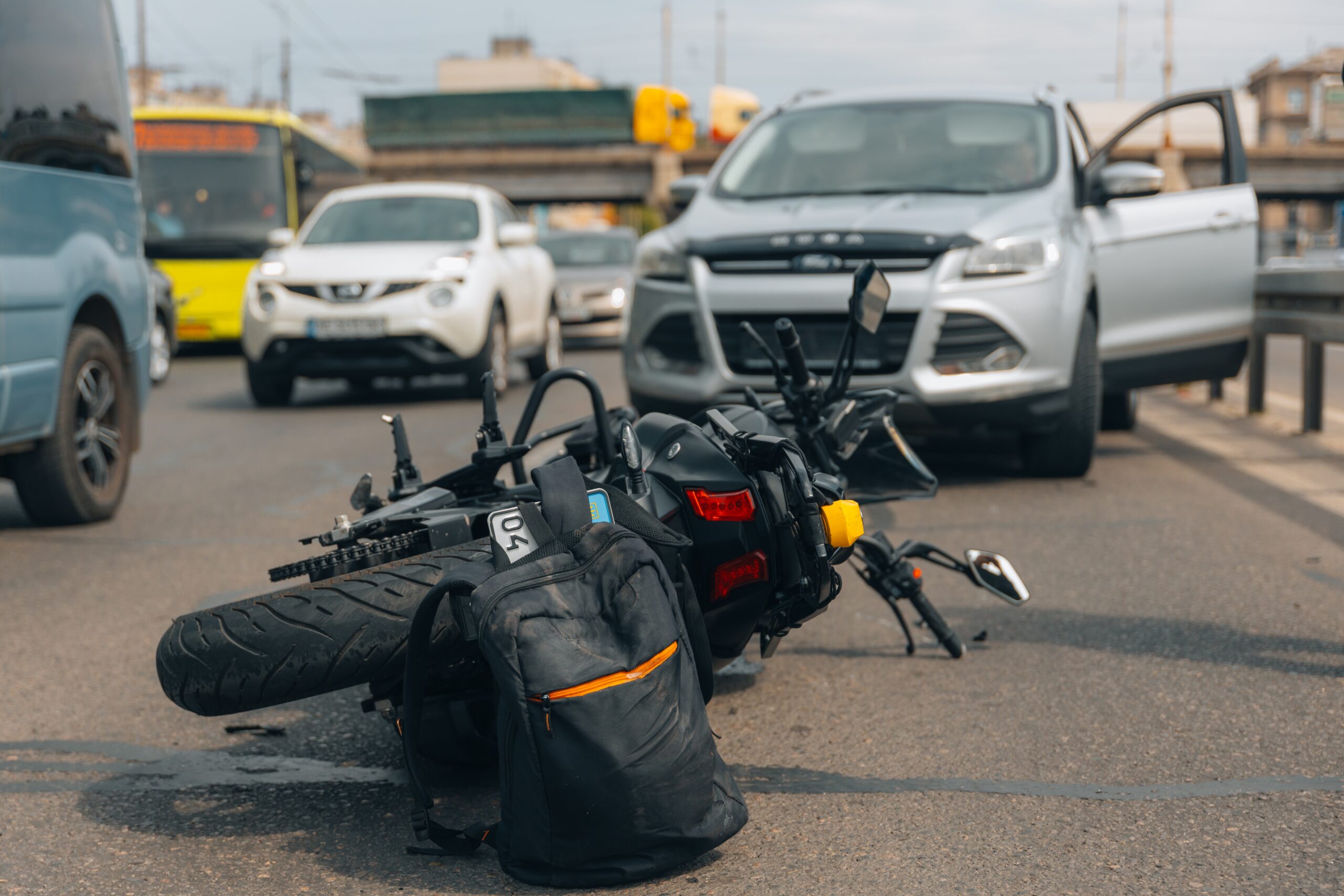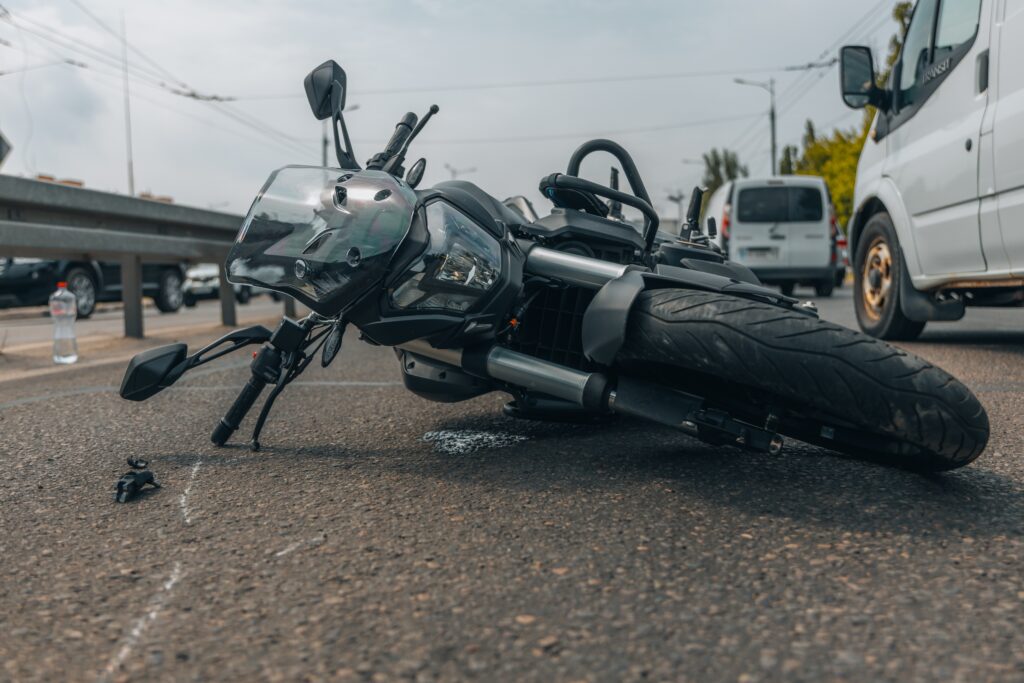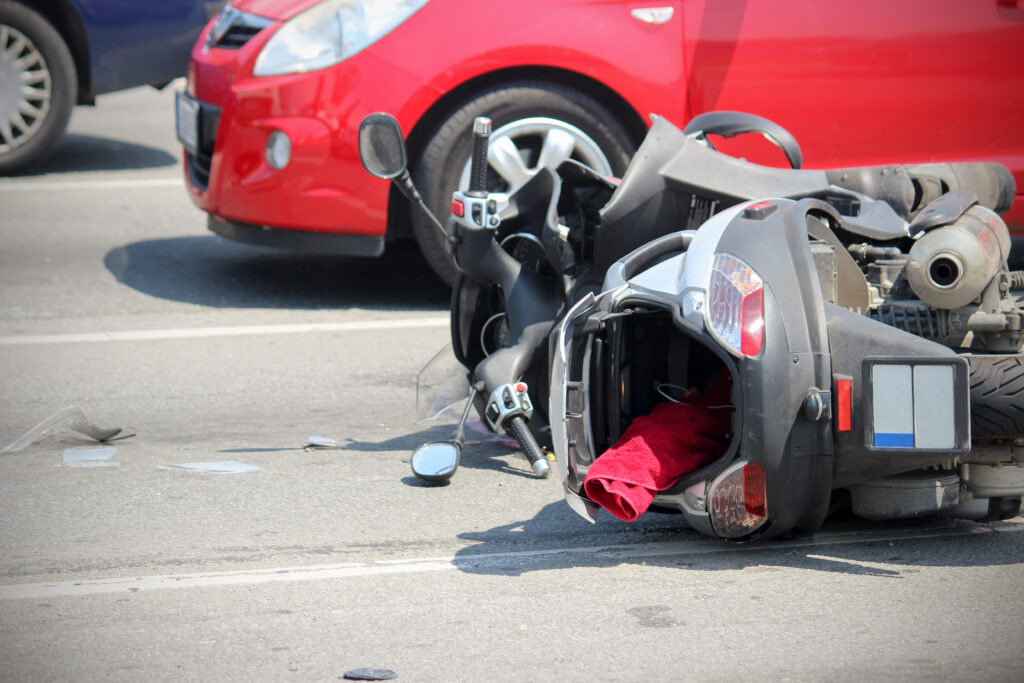For motorcyclists in Omaha and Lincoln, certain intersections are sites of heightened risk. Areas like Saddle Creek Road at Leavenworth Street and the complicated I-480/US-75 exchange are known hotspots where the blend of heavy traffic, high speeds, and complicated road design creates dangerous conditions. While road layout plays a part, the most common factor in a motorcycle crash is another driver failing to see the rider in their path.
This reality adds a layer of difficulty to an injury claim, particularly with Nebraska's comparative negligence rules. This is a legal concept where blame for an accident is shared. If you are found partially at fault, your ability to recover money for your injuries is reduced. After a crash, you are likely facing medical bills, lost income, and significant disruption to your life.
Managing this process to secure compensation for your recovery is challenging. At Steffens Law Office P.C., we help you manage this process and protect your rights. If you have a question about an accident that injured you or a loved one, call us at (402) 414-4896.
Key Takeaways for Omaha and Lincoln Motorcycle Accidents
- Driver inattention is the leading cause of most motorcycle accidents. Road design contributes to risk, but the core of a legal claim is typically another driver's failure to see the motorcyclist.
- Nebraska’s comparative fault rule may reduce your compensation. You are able to recover damages if you are less than 50% at fault, but your final award is reduced by your percentage of blame.
- Riding without a helmet does not prevent a personal injury claim. While legal for certified riders over 21, insurance companies will argue it worsened head injuries, a tactic your motorcycle accident lawyer must be prepared to counter.
Omaha’s Motorcycle Accident Hotspots: A Closer Look
Saddle Creek Road at Leavenworth Street
The Problem
This area is characterized by its high volume of traffic and a complicated intersection design.
Why It's Dangerous for Riders
Proximity to the university and a major medical center means a constant flow of commuter traffic. Multiple lanes merge and shift, forcing drivers to make quick decisions. In these moments of rapid assessment, a motorcyclist is easily overlooked in a blind spot, leading to devastating lane-change or turn-related accidents.
The I-480 / US-75 / US-6 Exchange
The Problem
This is a major highway interchange defined by high speeds and constant merging.
Why It's Dangerous for Riders
The primary danger here is rapid lane changes made by drivers of cars and large trucks who may not perform an adequate head check before moving over. A motorcycle's smaller profile makes it nearly invisible in a quick mirror glance at 60 mph.
Abbot Drive at Crownpoint Avenue
The Problem
Located near the airport, this area includes long straightaways that might encourage speeding, combined with intersections providing access to airport facilities and industrial parks.
Why It's Dangerous for Riders
A common risk here involves drivers misjudging an approaching motorcycle's speed. A driver waiting at an intersection may see a motorcycle in the distance but incorrectly assume they have plenty of time to pull out or make a left turn. This miscalculation places them directly in the path of the rider, who has little time or space to react.
Papillion Parkway at Blondo Street
The Problem
This is a busy suburban intersection with heavy cross-traffic, compounded by vehicles entering and exiting commercial parking lots.
Why It's Dangerous for Riders
This location is a prime example of the "left-turn" scenario, one of the most frequent causes of motorcycle crashes. A driver waiting to turn left becomes focused on finding a gap in oncoming cars and their brain filters out the smaller profile of a motorcycle. They initiate the turn, believing the way is clear, directly into the rider's path.
Dangerous Roads and Intersections for Motorcyclists in Lincoln

O Street Between 48th and 84th Street
The Problem
O Street is Lincoln’s main east–west artery, lined with restaurants, shopping centers, and constant cross-traffic. It carries heavy congestion during nearly every hour of the day.
Why It’s Dangerous for Riders
Frequent turns into and out of driveways, plus multiple traffic lights in close proximity, create an unpredictable flow of movement. Riders are especially at risk when drivers turn left across oncoming lanes or dart out from parking lots, misjudging a motorcycle’s speed or distance. A recent crash near 70th Street illustrates the risk—a motorcyclist lane-splitting between two vehicles at night struck both when one changed lanes unexpectedly.
North 90th Street at Adams Street
The Problem
This intersection in northeast Lincoln combines suburban residential traffic with higher-speed through lanes. Drivers often underestimate how fast vehicles are moving on the long, straight approach to the light.
Why It’s Dangerous for Riders
A recent fatal crash here involved a rider struck by an SUV turning through the intersection. Police cited speed and a failure to yield as contributing factors. These collisions are common when drivers look for large vehicles but fail to register a smaller motorcycle closing distance quickly.
27th Street Corridor (from Cornhusker Highway to South Street)
The Problem
This north–south route cuts directly through central Lincoln, with constant cross-traffic from residential side streets and commercial entrances. Lanes narrow and widen abruptly, especially near downtown and campus areas.
Why It’s Dangerous for Riders
Motorists often make last-second lane changes to reach driveways or exits, and motorcycles are frequently hidden in blind spots. Stop-and-go conditions also increase the chance of rear-end collisions, especially at dusk or when drivers are distracted by GPS navigation.
Cornhusker Highway at 33rd Street
The Problem
Cornhusker Highway serves as a busy east–west connector for trucks and commuters. The intersection at 33rd Street is notorious for rapid lane shifts and high closing speeds.
Why It’s Dangerous for Riders
Motorcycles traveling with the flow of fast-moving traffic are easily missed by drivers merging from side streets. Many of these collisions happen when larger vehicles (often pickups or delivery trucks) try to beat the light or merge too quickly into traffic without fully clearing their blind spots.
Van Dorn Street at 70th Street
The Problem
This is a residential and commuter corridor where speeding, heavy afternoon traffic, and limited sightlines combine to create constant hazards.
Why It’s Dangerous for Riders
Drivers frequently roll through yellow lights or make unprotected left turns without accounting for oncoming motorcycles. Because Van Dorn dips slightly near the intersection, riders can be obscured by the roadway’s grade until they are dangerously close.
Why Do These Crashes Happen? Beyond Just “Dangerous Roads”

Left-Hand Turns
Drivers frequently look through a motorcycle because their brain is scanning for larger, more familiar threats like cars and trucks. This is a phenomenon known as "inattentional blindness." The driver may be looking in the right direction, but their brain doesn't register the motorcycle as a vehicle they need to yield to. This cognitive blind spot is a leading cause of catastrophic motorcycle accidents at intersections.
Unsafe Lane Changes
Think of a car's blind spot as a curtain; a motorcycle disappears behind it completely. A simple mirror check is not enough to reveal a rider who is positioned just off the car's rear quarter. A physical head turn is necessary to confirm the lane is clear, but in heavy traffic or when in a hurry, many drivers neglect this simple, sight-saving action.
Distracted Driving
Distracted driving goes far beyond texting. It includes adjusting the stereo or GPS, eating, or being deeply engaged in a conversation with a passenger. For the driver of a two-ton vehicle, a few seconds of inattention might mean a missed turn. For a motorcyclist in their path, those same few seconds change a life forever.
"I Never Even Saw Him"
This is one of the most common things an at-fault driver says after a motorcycle crash, but it is not a valid excuse. From a legal standpoint, it is an admission of negligence. Every driver has a responsibility to see what is there to be seen. Their failure to register your presence is the basis of an injury claim, and our role at Steffens Law Office P.C. is to hold them accountable for that failure.
How Is Blame Determined in a Nebraska Motorcycle Crash?

Nebraska uses a rule called "Modified Comparative Fault,” which is a system for dividing responsibility. You may recover compensation for your motorcycle accident injuries as long as your share of the blame is determined to be less than 50%. If you are found to have any percentage of fault below that 50% threshold, your final compensation award is simply reduced by that percentage.
Common Ways Insurers Try to Shift Blame to Riders
Insurance companies for the at-fault party will conduct a thorough investigation, and they will look for any evidence to argue you were at fault. Our role is to keep them accountable and ensure no amount of blame is unjustly put on you. Common tactics include:
- Arguing you were speeding: Even if you did not receive a ticket, they may use witness statements or the physical evidence of the crash to claim you were traveling at an unsafe speed.
- Claiming you were lane-splitting: While not explicitly illegal in all situations in Nebraska, they will frame this maneuver as reckless behavior to assign you a percentage of fault.
- Questioning your license: They will verify that you hold the proper Class M license required to operate a motorcycle in the state.
Our Role in Protecting You from Unfair Blame
We do not simply accept the insurance company's or the police department's version of events. We conduct our own independent investigation. This involves gathering police reports, interviewing available witnesses, analyzing the crash scene, and consulting with reconstruction experts if needed. Our goal is to build a clear, evidence-based account of what truly happened, ensuring that responsibility is placed where it belongs: on the driver who caused your injuries.
What Compensation Does a Motorcycle Claim Cover?
The purpose of a personal injury claim is to provide financial resources to help you put your life back together after a serious injury. In legal terms, the compensation available is referred to as "damages." These are intended to cover the full spectrum of losses you have suffered because of the accident.
Breakdown of Potential Compensation (Damages):
- All Medical Bills: This covers everything from the ambulance ride and emergency room treatment to any future surgeries, physical therapy, medications, and necessary medical equipment.
- Lost Wages: This is reimbursement for the income you have already lost because you were unable to work during your recovery.
- Future Lost Earning Capacity: If your injuries are permanent and prevent you from returning to your previous job or diminish your ability to earn a living over your lifetime, you may be compensated for this future loss.
- Pain and Suffering: This compensates you for the physical pain, emotional distress, and loss of enjoyment of life that the accident and your injuries have caused.
- Property Damage: This is the cost to repair or replace your motorcycle, helmet, and any other gear that was damaged in the crash.
The Statute of Limitations
There is a deadline for filing a personal injury lawsuit in Nebraska. Generally, the statute of limitations gives you four years from the date of the accident to file a claim. While that may sound like a long time, building a strong, well-documented case requires a thorough investigation that should begin as soon as possible after the accident.
Frequently Asked Questions About Lincoln & Omaha Motorcycle Accidents
Do I have to talk to the other driver's insurance adjuster?
No, and we strongly advise against it. The adjuster's job is to protect their company's financial interests, which means finding ways to minimize your claim. Any statement you give them, no matter how innocent it seems, could potentially be used to argue that you were at fault or that your injuries are not as severe as you claim. Let your attorney handle all communication with the other party's insurance company.
What if the driver who hit me was uninsured or underinsured?
You may still have a path to recovery through your own motorcycle insurance policy. We will review your policy documents to determine if you have Uninsured/Underinsured Motorist (UM/UIM) coverage. This is a specific type of coverage designed to protect you in exactly this situation, allowing you to file a claim with your own insurer to cover your damages.
My bike wasn’t badly damaged, but I am in a lot of pain. Do I still have a case?
Yes. The amount of damage to a motorcycle typically has little correlation with the severity of the rider's injuries. A low-speed impact easily throws a rider from the bike, causing significant harm like fractures, road rash, or internal injuries. Your case is built on the extent of your injuries and their impact on your life, not on the repair estimate for your bike.
Will I have to go to court?
The vast majority of personal injury cases are settled through negotiations with the insurance company, without ever needing to go to trial. However, at Steffens Law Office P.C., we prepare every case from the beginning as if it will end up in front of a jury. This thorough preparation shows the insurance company that we are serious and ready to litigate, which typically results in a more favorable settlement offer.
How much does it cost to hire Steffens Law Office?
We handle personal injury cases on a contingency fee basis. This means you do not pay any attorney's fees upfront. We only receive a fee if we are successful in recovering compensation for you. Our fee is a percentage of the final settlement or verdict, so if we do not win your case, you owe us nothing.
Don’t Let Doubts About Fault Prevent You From Seeking Help
After a motorcycle crash, it is natural to replay the event in your mind, questioning every decision you made. But another driver's moment of inattention should not become a financial and physical burden you must manage alone.
The legal process exists to provide a path to financial stability so you can focus on what matters most: your physical recovery. We will help guide you on that path.Let's talk about what happened and what your options are. The consultation is free, confidential, and there is no obligation to hire our firm. Contact Steffens Law Office P.C. today at (402) 414-4896.